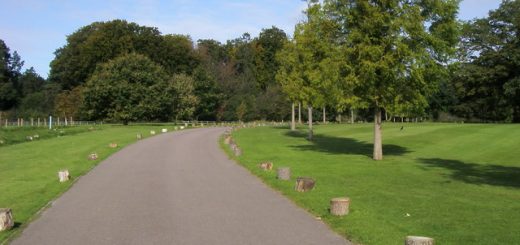Mortham Tower
A private residence, Mortham Tower is a Grade I listed fortified courtyard house and pele tower dating from the time of King Henry VII (1485-1509), with a reputation for having been haunted 200 years ago. The estate was the seat of the Rokeby family after William of Mortham sold the estate to a Thomas de Rokeby and by 1286 the manors of Rokeby and Mortham were held by Alexander de Rokeby. Following the defeat of King Edward II at the Battle of Bannockburn in 1343, Scots raids into the North of England damaged the family’s estate. In 1343 their house was burned and during a raid in 1346 the ‘hamlet of Mortham with its church appears to have been destroyed’ (A History of the County of York North Riding: Volume 1).
 According to Ralph Rokeby writing during the reign of Queen Elizabeth I (Born 7 September 1533 – Died 24 March 1603), Mortham Tower was built ‘on the west bank’ following those Scots raids. The estate was purchased by a merchant named William Robinson around 1610 and the Robinson family took Rokeby Park as their seat, a house built of the site of the original burned home of the Rokebys and Mortham Tower became a tenanted farm.
According to Ralph Rokeby writing during the reign of Queen Elizabeth I (Born 7 September 1533 – Died 24 March 1603), Mortham Tower was built ‘on the west bank’ following those Scots raids. The estate was purchased by a merchant named William Robinson around 1610 and the Robinson family took Rokeby Park as their seat, a house built of the site of the original burned home of the Rokebys and Mortham Tower became a tenanted farm.
A History of the County of York North Riding: Volume 1 (1914) edited by William Page gives the following description of the building. ‘Mortham Tower stands to the south of the River Tees near its confluence with the Greta and is now used as a farmhouse. It is said to have been built by Thomas Rokeby in the time of Henry VII and was altered in the 18th century by Sir Thomas Robinson, the architect and owner of Rokeby Hall.
Mortham is one of the most southerly of the border peels which are so frequently found in the northern counties. The tower proper stands at the north-west angle of a courtyard and has four stories…..The south-west turret is round, the south-east octagonal, both projecting from the face of the wall and supported on oversailing courses. That at the north-west is square with one edge chamfered and is supported on each of its two overhanging faces by three large moulded corbels. The north-east turret rises from the ground and contains the stair turret; its plan forms part of a hexagon. Each of these turrets had comparatively large windows on all faces, and the whole appearance of them suggests that the tower was built more for ornamental than defensive purposes; the parapet has a small battlement. The range of buildings north of the tower is probably contemporary with it, but has been more or less modernized; the rooms immediately north were lighted by a bay window facing west and the first floor story has a beautiful oak panelled ceiling with moulded girders and rafters. The wing north of this may in part be as old as the tower, but has been altered subsequently; a bit of 18th-century ornamental plaster ceiling remains in an angle bay window in the northernmost room on the first floor.’
Ghost?
In ‘Memoirs of the Life of Sir Walter Scott: In Three Volumes, Volume 1’ John G. Lockhart tells us ‘The lady for whose ghost you enquire at Rokeby has been so buried in uncertainty you may make what you like of her. The most interesting fiction makes her the heiress of the Rokebys murdered in the woods of the Greta by a greedy collateral who inherited the estate. She reached the house before she expired and her blood was extant in my younger days at Mortham Tower. Others say it was a Lady Rokeby, the wife of the owner who was shot in the walks by robbers, but she certainly became a ghost and under the very poetic nom de guerre of Mortham Dobby, she appeared dressed as a fine lady with a piece of white silk trailing behind her, without a head indeed though no tradition states how she lost so material a member, but with many of its advantages for she had long hair on her shoulders and eyes nose and mouth in her breast. The parson once by talking Latin to her, confined her under the bridge that crosses the Greta at my dairy, but the arch being destroyed by floods in 1771 became incapable of containing a ghost any longer and she was seen after that time by some of the older parishioners. I often heard of her in my early youth from a Sibyl who lived in the park to the age of 105, but since her death I believe the history has become obsolete’.




Recent Comments